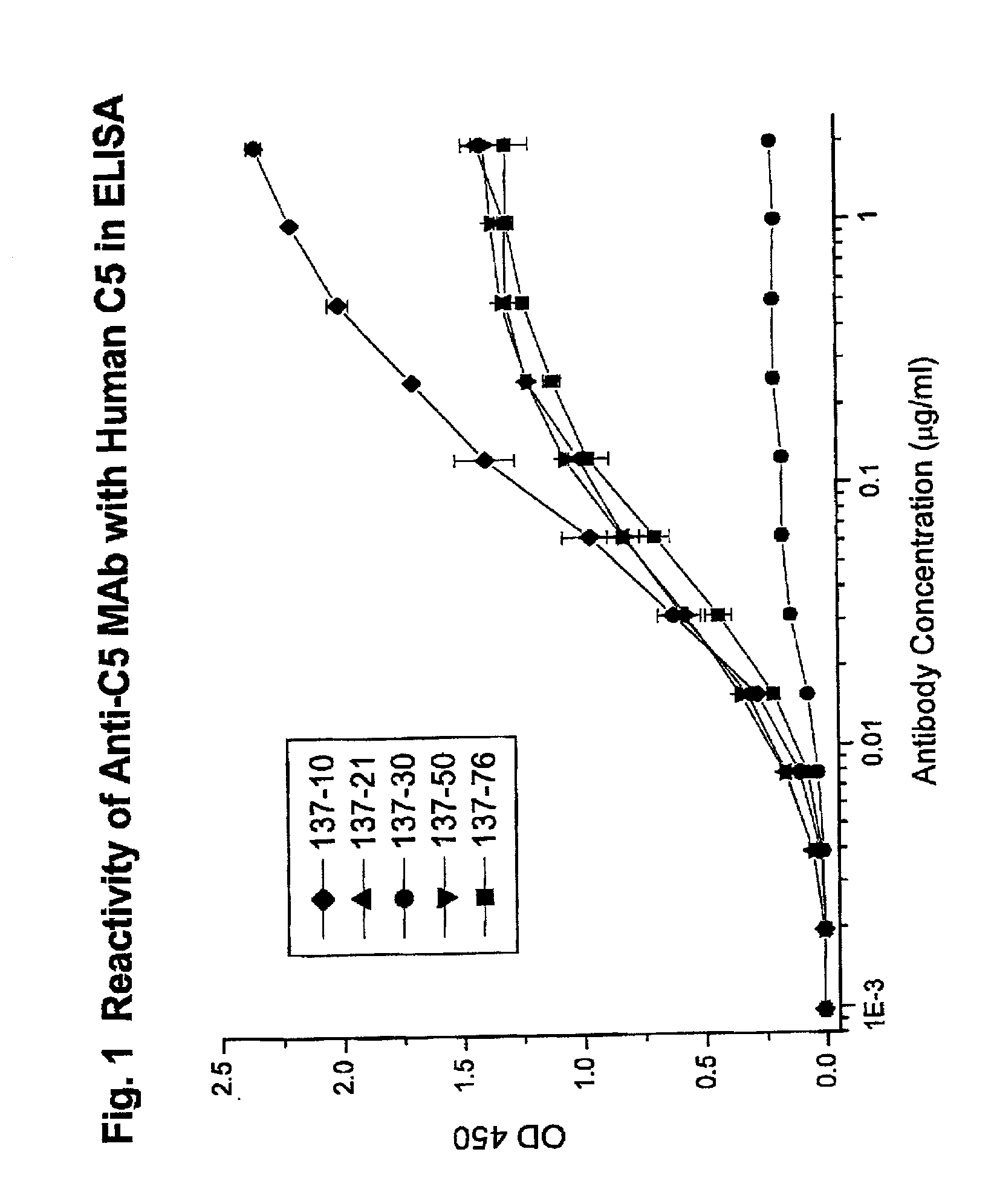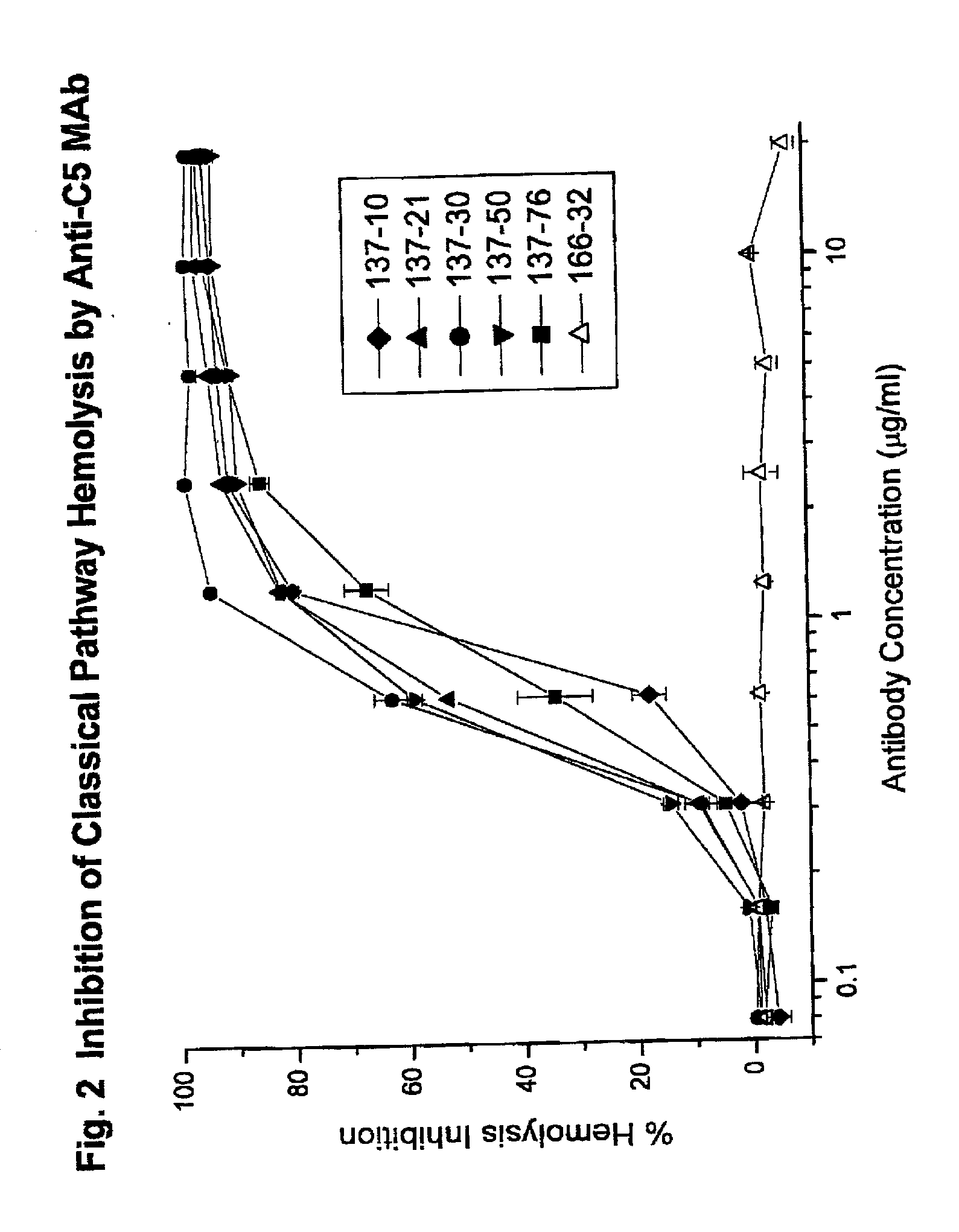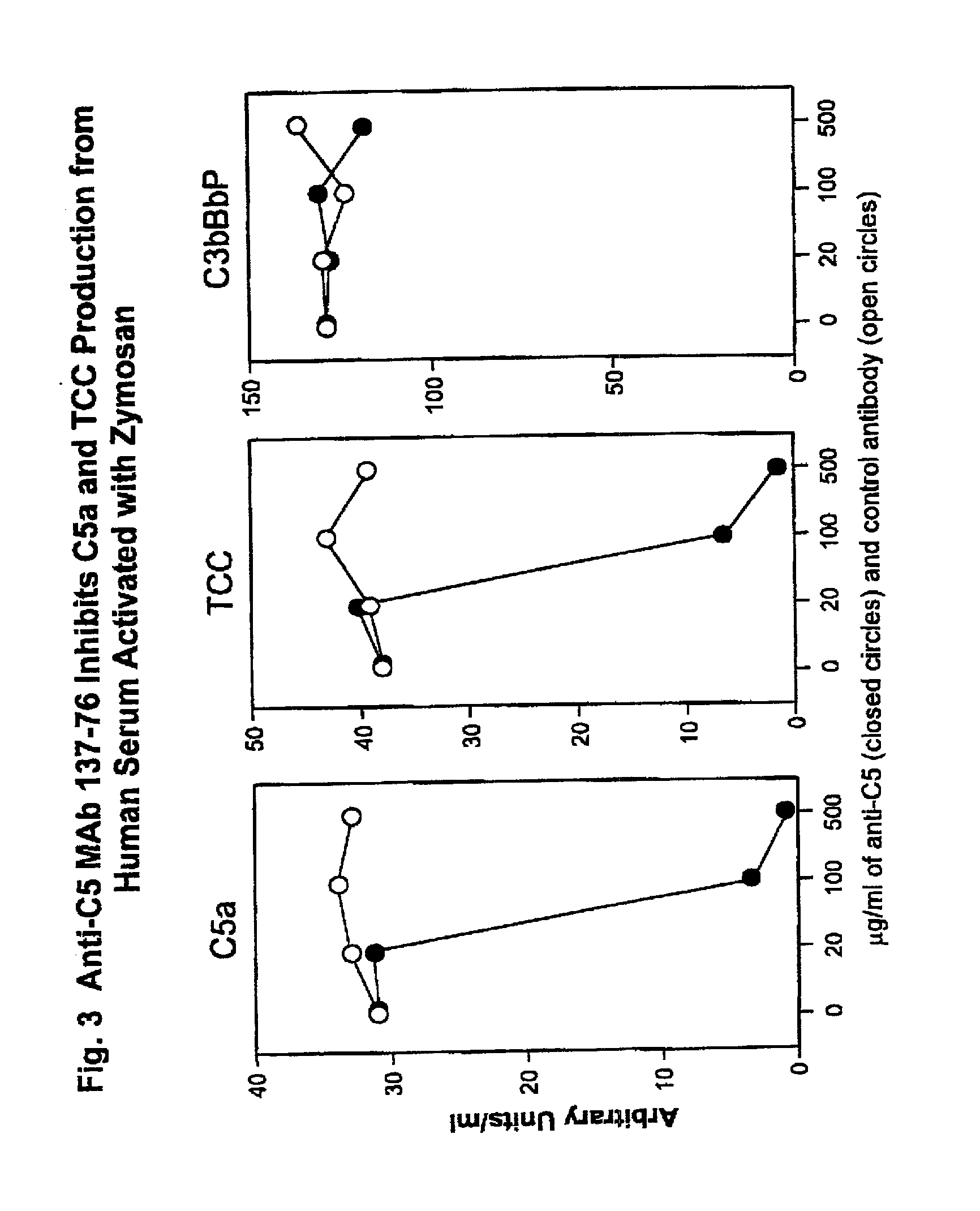Inhibition of complement C5 activation for treatment and prevention of delayed xenograft/acute vascular rejection
- Summary
- Abstract
- Description
- Claims
- Application Information
AI Technical Summary
Benefits of technology
Problems solved by technology
Method used
Image
Examples
example 2
Inhibition of Complement-Activated Hemolysis by Anti-C5 MAbs
[0083] The anti-C5 MAbs were tested for inhibition of the classical complement in hemolytic assays. In the assays, chicken red blood cells (RBCs) (5.times.10.sup.7 cells / ml) in gelatin / veronal-buffered saline (GVB.sup.++) containing 0.5 mM MgCl.sub.2 and 0.15 mM CaCl.sub.2 were sensitized with purified rabbit anti-chicken RBC immunoglobulins at 8 .mu.g / ml (Inter-Cell Technologies, Hopewell, N.J.) for 15 minutes at 4.degree. C. The cells were then washed with GVB.sup.++. The washed cells were resuspended in the same buffer at 1.7.times.10.sup.8 cells / ml. In each well of a round-bottom 96-well microtest plate, 50 .mu.l of normal human serum (2%) was mixed with 50 .mu.l of GVB.sup.++ or serially diluted test MAb, then 30 .mu.l of the washed sensitized chicken RBC suspension were added to the wells containing the mixtures. Fifty microliters of normal human serum (2%) was mixed with 80 .mu.l of GVB.sup.++ to give the serum color...
example 3
Inhibition of C5 Activation by Anti-C5 MAbs in Human Serum Activated with Zymosan
[0085] To study the effects of anti-C5 MAb 137-76 on C5 activation, we measured the inhibition of the formation of C5a and TCC (terminal C5b-9 complement complex) in human serum activated with zymosan (yeast particle) via the alternative complement pathway. Different concentrations of anti-C5 MAb 137-76 were added to human serum (10%) activated with zymosan (1 mg / ml). An isotype-matched control MAb G3-519 was used as negative control. MAb G3-519 is specific to HIV-1 external envelope glycoprotein gp120 and has no effects on complement activity. The activation products C5a, TCC, and C3bBbP were measured by quantitative ELISAs. C5a and TCC are the specific markers for the activation of C5, whereas C3bBbP, the alternative C3 / C5 convertase, for the activation of the alternative complement pathway. The ELISAs for C5a and TCC determination have been described in detail previously (Bergh K et al., J. Immunol. ...
example 4
Inhibition of Human Serum-Induced Upregulation of E-Selectin on Porcine Aortic Endothelial Cells
[0087] Type II endothelial cell activation is a hallmark of DXR / AVR. Upregulation of E-selectin on endothelial cells is one of the characteristics of type II endothelial cell activation. We examined the effects of anti-C5 MAb 137-76 on human serum-induced upregulation of E-selectin on isolated porcine aortic endothelial cells (PAEC).
[0088] a. Preparation of PAEC culture
[0089] Porcine aortae were obtained from a local slaughterhouse (Fellesslakteriet, kern, Oslo, Norway). The vessel was cut distal to the aortic arch with a sterile surgical scissors and immediately placed into a sterile beaker containing endothelial cell buffer, 2.5 .mu.g / ml amphotericin .beta. and 50 .mu.g / ml gentamycin. The aortae were transported to the laboratory within 30 minutes, and transferred to a second beaker containing fresh endothelial cell buffer with antibiotics at 4 .degree. C. The intercostal vessels were c...
PUM
| Property | Measurement | Unit |
|---|---|---|
| Inhibition | aaaaa | aaaaa |
Abstract
Description
Claims
Application Information
 Login to View More
Login to View More - R&D
- Intellectual Property
- Life Sciences
- Materials
- Tech Scout
- Unparalleled Data Quality
- Higher Quality Content
- 60% Fewer Hallucinations
Browse by: Latest US Patents, China's latest patents, Technical Efficacy Thesaurus, Application Domain, Technology Topic, Popular Technical Reports.
© 2025 PatSnap. All rights reserved.Legal|Privacy policy|Modern Slavery Act Transparency Statement|Sitemap|About US| Contact US: help@patsnap.com



